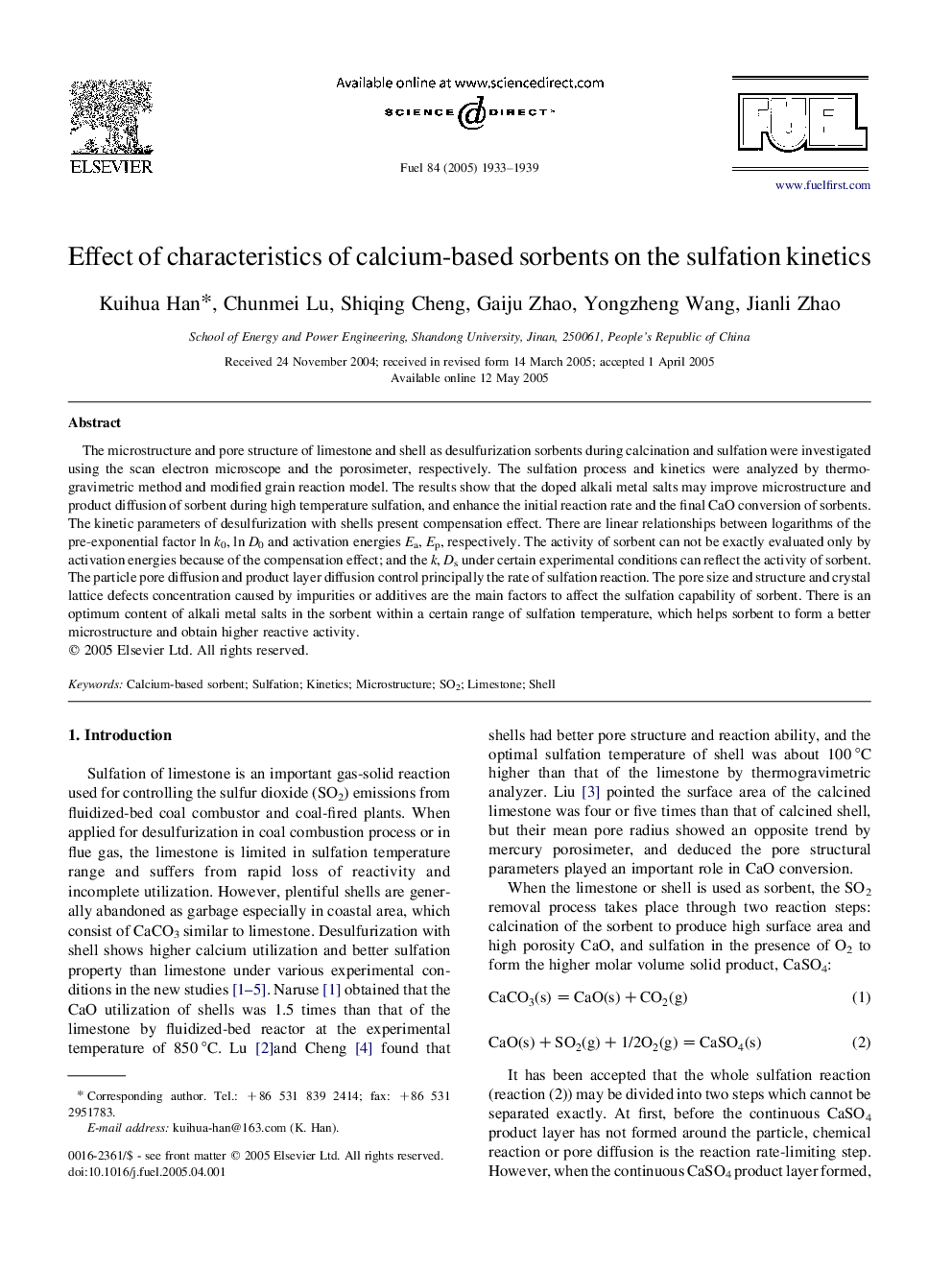| Article ID | Journal | Published Year | Pages | File Type |
|---|---|---|---|---|
| 9629095 | Fuel | 2005 | 7 Pages |
Abstract
The microstructure and pore structure of limestone and shell as desulfurization sorbents during calcination and sulfation were investigated using the scan electron microscope and the porosimeter, respectively. The sulfation process and kinetics were analyzed by thermo-gravimetric method and modified grain reaction model. The results show that the doped alkali metal salts may improve microstructure and product diffusion of sorbent during high temperature sulfation, and enhance the initial reaction rate and the final CaO conversion of sorbents. The kinetic parameters of desulfurization with shells present compensation effect. There are linear relationships between logarithms of the pre-exponential factor ln k0, ln D0 and activation energies Ea, Ep, respectively. The activity of sorbent can not be exactly evaluated only by activation energies because of the compensation effect; and the k, Ds under certain experimental conditions can reflect the activity of sorbent. The particle pore diffusion and product layer diffusion control principally the rate of sulfation reaction. The pore size and structure and crystal lattice defects concentration caused by impurities or additives are the main factors to affect the sulfation capability of sorbent. There is an optimum content of alkali metal salts in the sorbent within a certain range of sulfation temperature, which helps sorbent to form a better microstructure and obtain higher reactive activity.
Related Topics
Physical Sciences and Engineering
Chemical Engineering
Chemical Engineering (General)
Authors
Kuihua Han, Chunmei Lu, Shiqing Cheng, Gaiju Zhao, Yongzheng Wang, Jianli Zhao,
